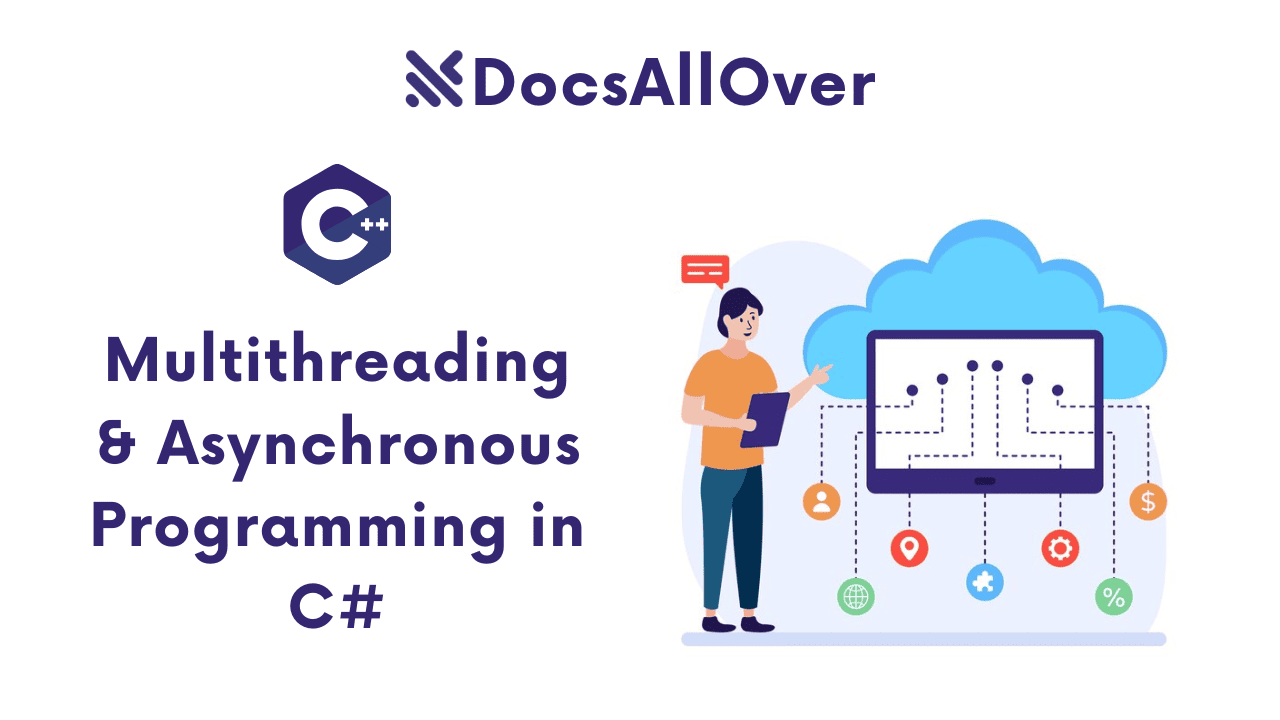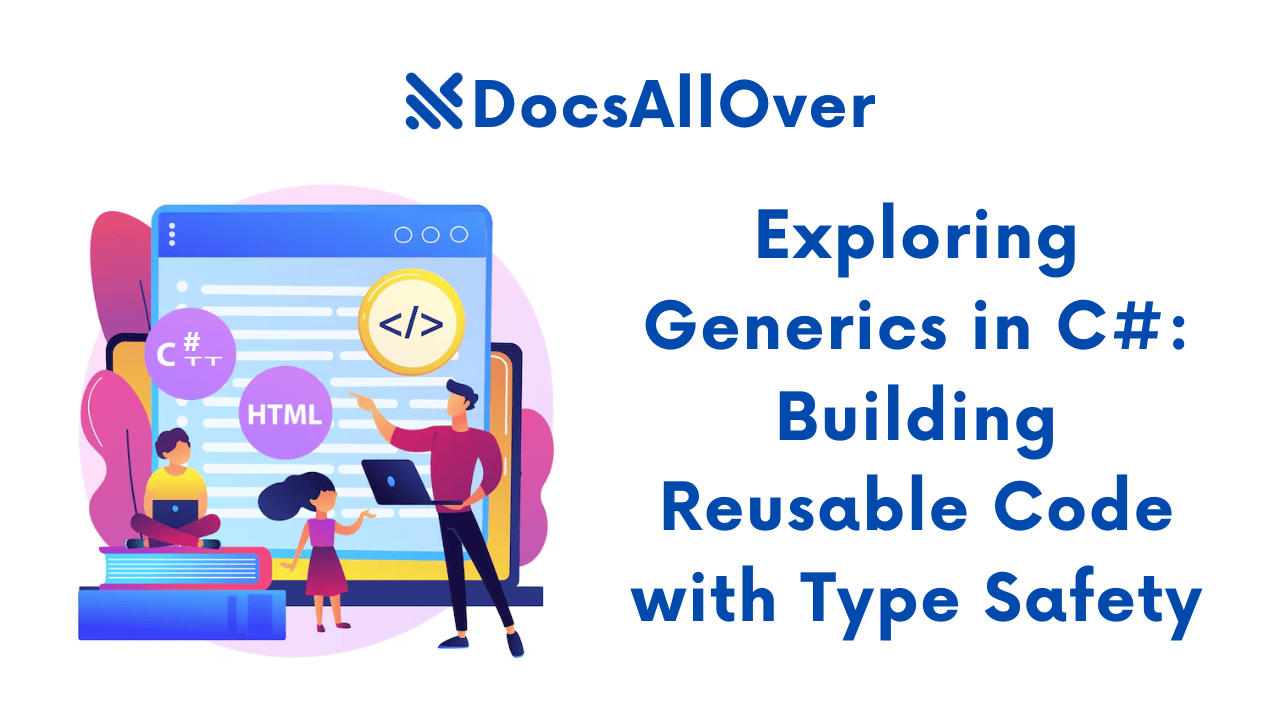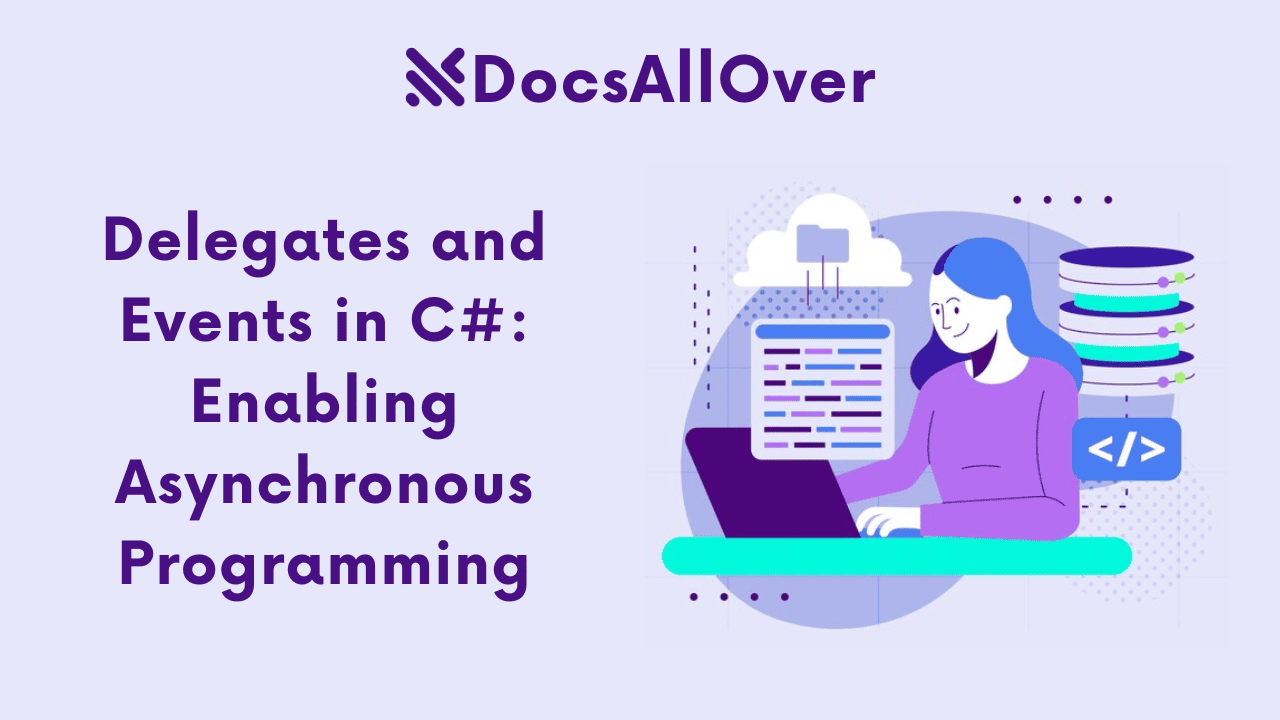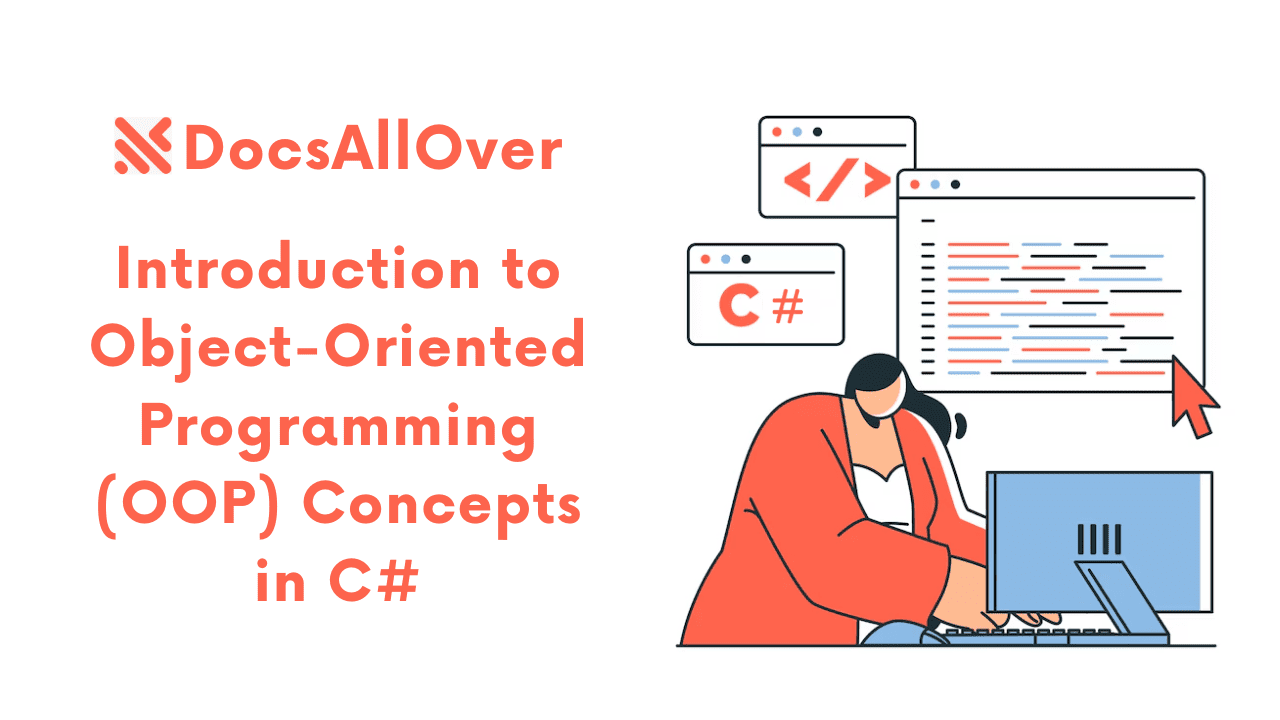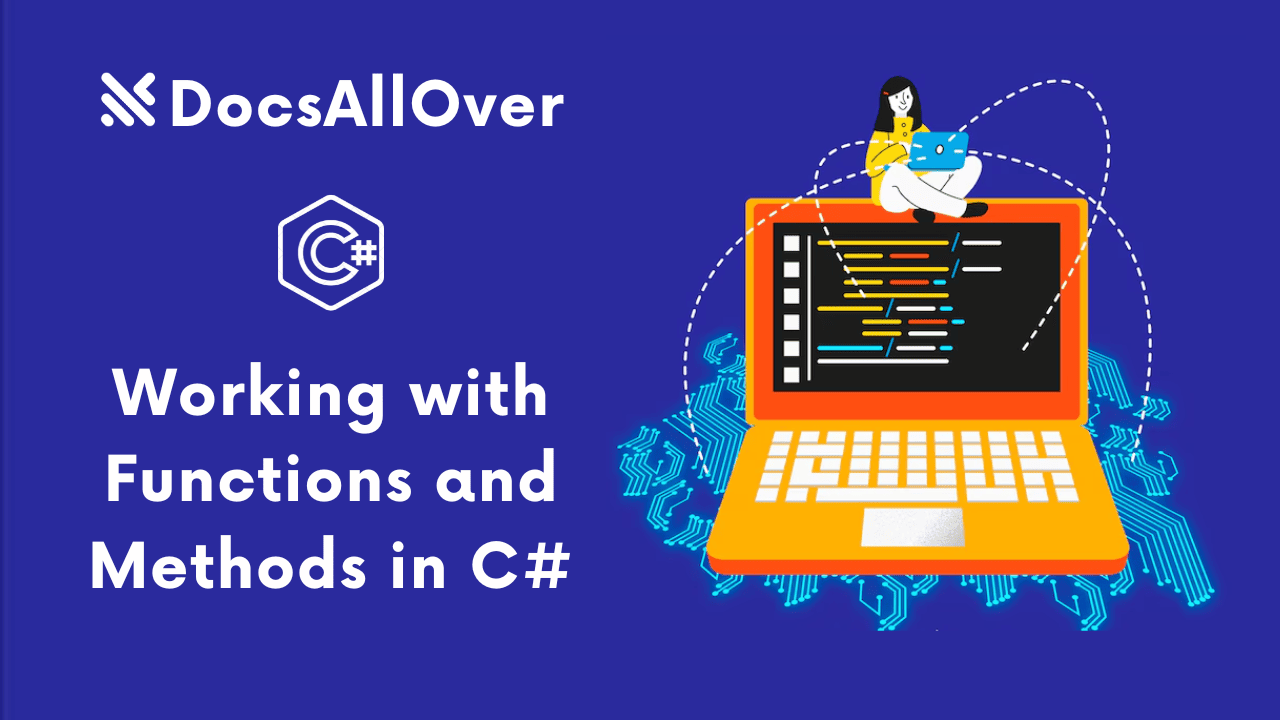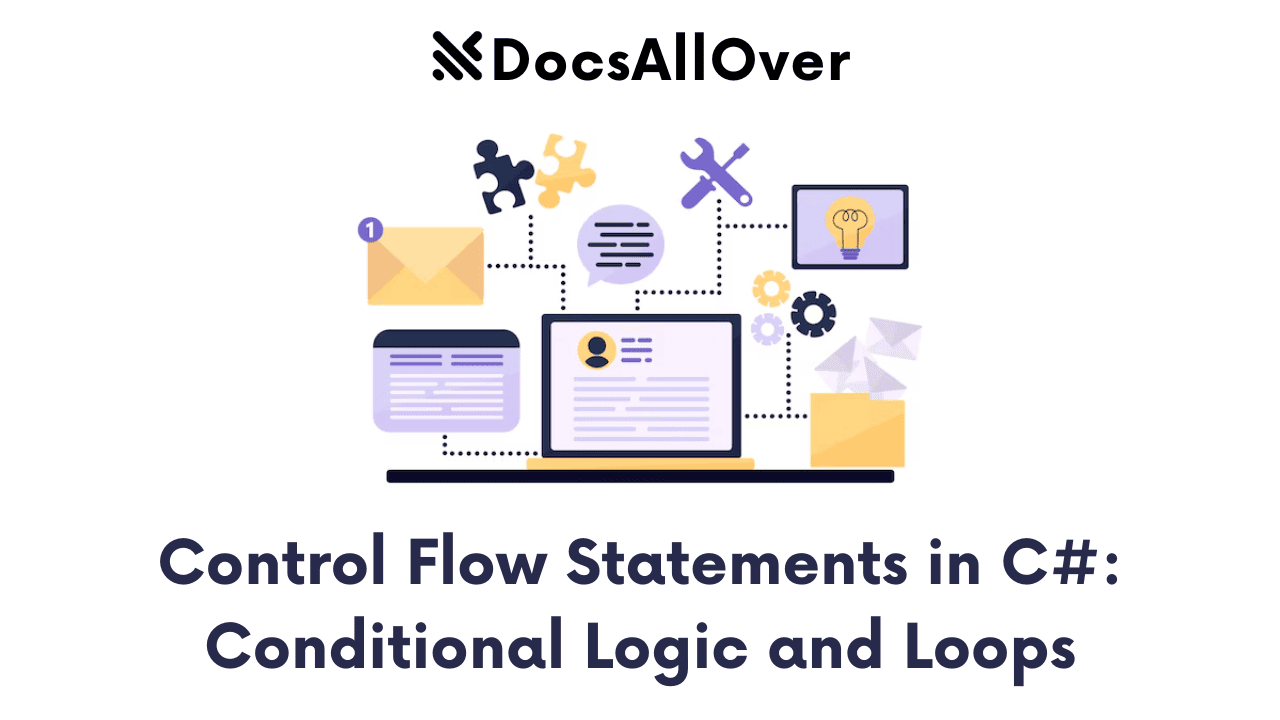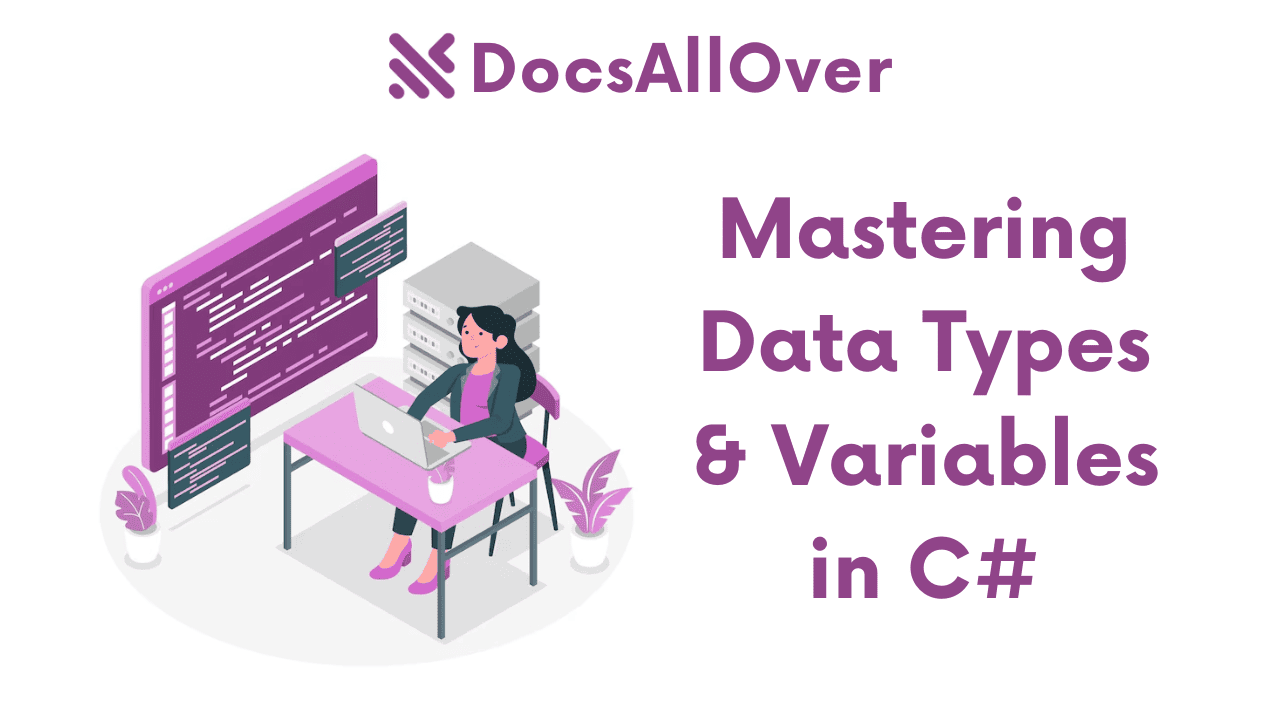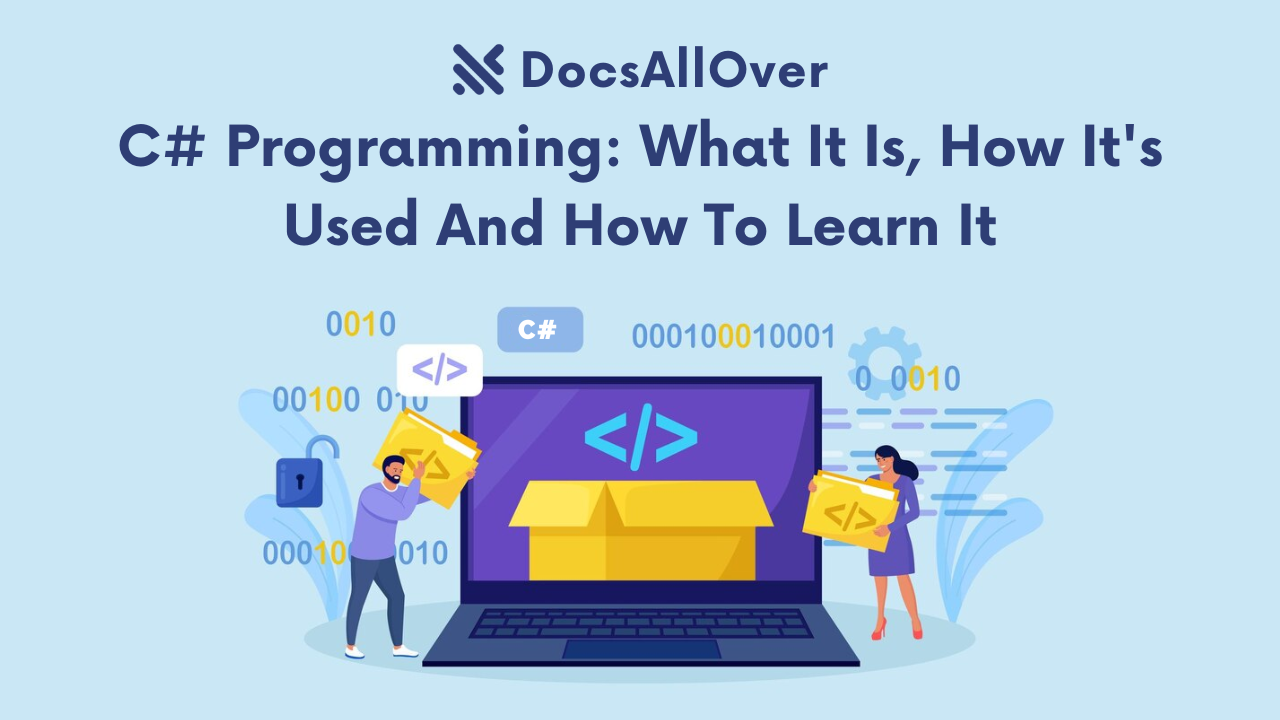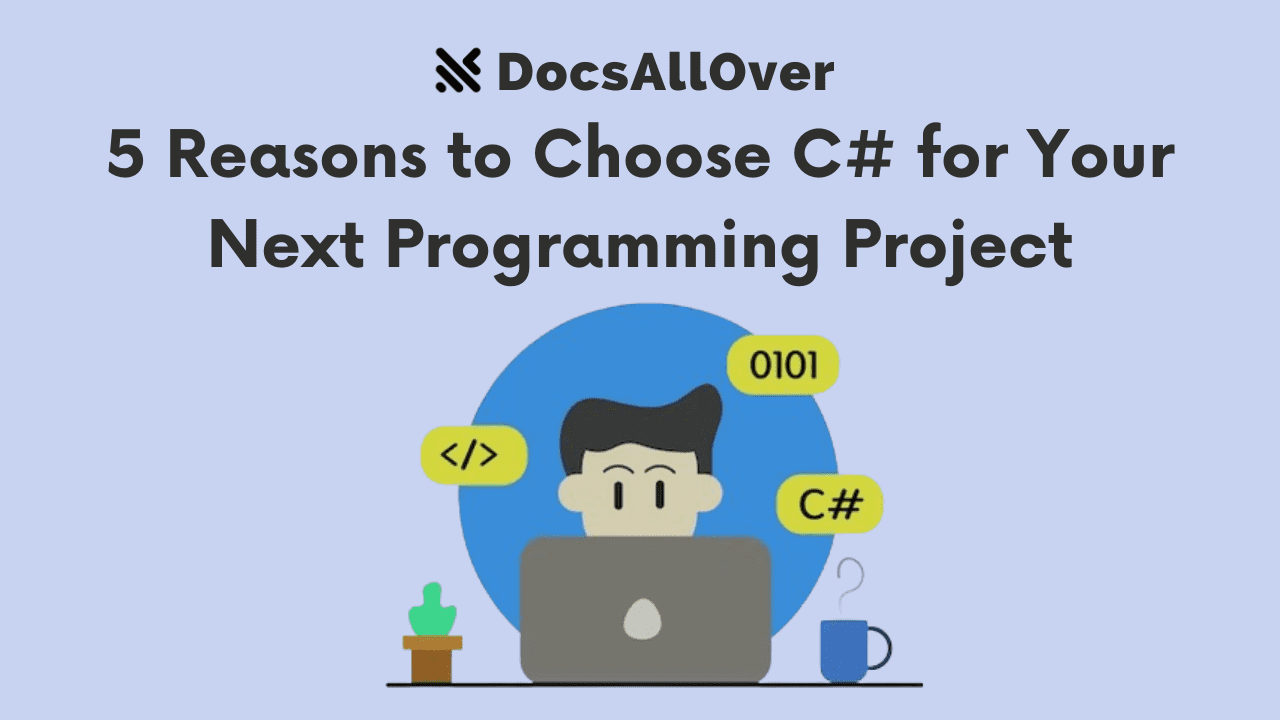Exception Handling in C#: Catching and Handling Errors Gracefully
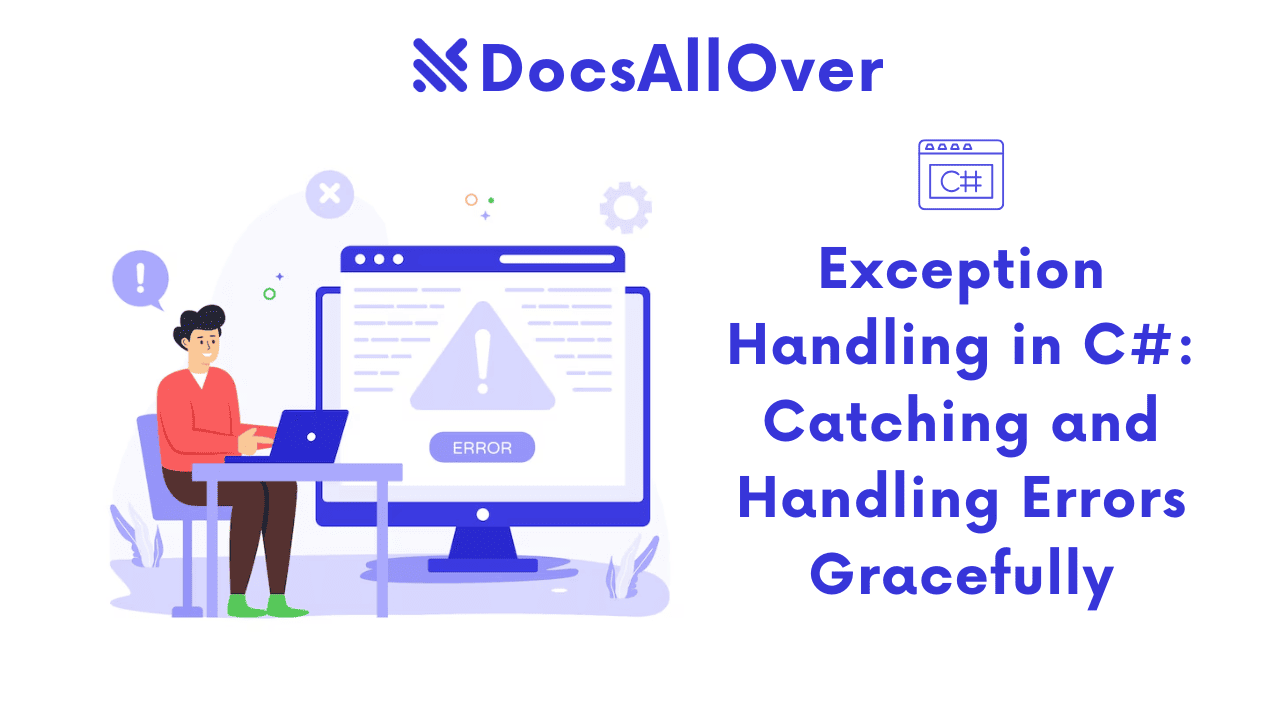
What are exceptions?
In C#, an exception is an object that represents an error condition or an unexpected event that occurs during the execution of a program. It's a way for the runtime environment to signal that something unusual or erroneous has happened that the normal flow of the program cannot handle.
Exceptions disrupt the typical sequential execution of code. When an exception is thrown, the runtime looks for a suitable handler (a catch block) to manage the error. If no appropriate handler is found, the program typically terminates. Think of an exception as a notification that something went wrong, requiring special attention to prevent the application from failing.
The hierarchy of exception classes in .NET (System.Exception).
- All exception classes in the .NET Framework ultimately derive from the base class
System.Exception. This forms a hierarchical structure that categorizes different types of errors. - Direct subclasses of
System.Exceptionrepresent broad categories of exceptions, such asSystem.SystemException(exceptions thrown by the Common Language Runtime - CLR) andSystem.ApplicationException(exceptions defined by user code, though its use is generally discouraged in favor of deriving directly fromSystem.Exceptionor more specific built-in exceptions). - Further down the hierarchy are more specific exception types that provide detailed information about the error. For example,
System.IO.IOExceptionis a base class for exceptions related to input/output operations, and it has subclasses likeSystem.IO.FileNotFoundException. - Understanding this hierarchy helps in catching and handling specific types of errors effectively. You can catch a general exception type to handle a broad category of errors or catch more specific types to implement tailored error handling logic.
Common built-in exception types (e.g., ArgumentNullException, FormatException, IOException).
The .NET Framework provides a rich set of pre-defined exception classes to cover common error scenarios. Some frequently encountered ones include:
System.ArgumentNullException: Thrown when a null value is passed to a method parameter that does not accept null.System.ArgumentException: Thrown when an invalid argument is passed to a method. It often has more specific subclasses like ArgumentOutOfRangeException.System.FormatException: Thrown when the format of an argument is invalid (e.g., trying to parse a non-numeric string to an integer).System.IO.IOException: A base class for exceptions that occur during input/output operations (e.g., reading or writing files). Subclasses includeFileNotFoundException,DirectoryNotFoundException,EndOfStreamException.System.NullReferenceException: Thrown when you try to access a member of an object that is currently null. This is a very common exception.System.IndexOutOfRangeException: Thrown when you try to access an element of an array or collection using an index that is outside the valid range.System.InvalidOperationException: Thrown when a method call is invalid in the current state of the object.System.DivideByZeroException: Thrown when an attempt is made to divide an integral or decimal value by zero.
Becoming familiar with these common exception types allows you to anticipate potential errors in your code and implement appropriate handling.
Unhandled exceptions and their consequences:
An unhandled exception occurs when an exception is thrown during program execution, and there is no catch block in the call stack that can handle that specific type of exception (or a base type that it inherits from).
The consequences of an unhandled exception can be severe:
- Application Crash: The most common outcome is the immediate termination of the application. This can lead to data loss, interrupted user workflows, and a negative user experience.
- Error Messages: The user might see a generic and often unhelpful error message provided by the operating system or the .NET runtime. These messages usually don't provide enough context for the user to understand or resolve the issue.
- Logging (Potentially): In some environments, unhandled exceptions might be logged to system event logs or application-specific log files. However, this doesn't prevent the crash and might only be useful for post-mortem debugging.
- System Instability: In critical systems or services, repeated unhandled exceptions can potentially lead to system instability or even failures in other dependent components.
Therefore, it's crucial to implement proper exception handling to catch and manage potential errors, preventing unhandled exceptions and ensuring the stability and reliability of your C# applications.
The try-catch Block: Catching Specific Exceptions
The try-catch block is the fundamental construct in C# for handling exceptions. It allows you to enclose code that might potentially throw an exception within a try block and then specify one or more catch blocks to handle specific types of exceptions that might occur.
Syntax of the try-catch block
The purpose of the try block (code that might throw an exception)
The try block encloses the section of your code where you anticipate that an exception might be thrown. This could be code that interacts with external resources (like files or networks), performs data conversions, accesses array elements, or any other operation that could potentially fail. The C# runtime monitors the code within the try block for any exceptions that are raised.
Catching specific exception types
You can have one or more catch blocks following a try block. Each catch block is designed to handle a specific type of exception. You specify the type of exception you want to catch in the parentheses after the catch keyword (e.g., catch (FormatException ex)). When an exception of that specific type (or a derived type) is thrown within the associated try block, the code within that catch block will be executed. The ex in the parentheses is the exception object itself, which contains information about the error (like the error message, stack trace, etc.).
Handling multiple exception types with multiple catch blocks
It's common to have different parts of your try block that might throw different types of exceptions. You can provide multiple catch blocks to handle each of these specific exception types in a tailored way.
The order of catch blocks (most specific to least specific)
The order in which you define your catch blocks is crucial. When an exception is thrown, the C# runtime checks the catch blocks in the order they appear. The first catch block that matches the type of the thrown exception (or a base type of the thrown exception) will be executed. Therefore, you should always order your catch blocks from the most specific exception types to the least specific. If you place a catch (Exception ex) block before a catch (FileNotFoundException ex) block, the FileNotFoundException will never be caught specifically, as it is a type of Exception.
In the above example, if a FileNotFoundException occurs, the catch (IOException ex) block will handle it because FileNotFoundException inherits from IOException. The more specific catch (FileNotFoundException ex) block will be skipped.
Using the Exception base class to catch all exceptions (and its implications)
You can use catch (Exception ex) to create a general exception handler that will catch any type of exception that isn't caught by a more specific catch block. While this might seem convenient for preventing unhandled exceptions and application crashes, it has several important implications:
- Loss of Specificity: You lose the ability to handle different types of errors in a tailored way. Your general
catchblock will have to handle all possible exceptions, which might not be appropriate for every scenario. - Difficulty in Recovery: It's often hard to implement meaningful error recovery if you don't know the specific type of exception that occurred.
- Masking Problems: Catching all exceptions can mask underlying issues in your code, making debugging more difficult. You might be catching and handling errors that you should actually be fixing.
- Potential for Unexpected Behavior: Your general error handling might not be suitable for all types of exceptions, potentially leading to unexpected behavior or incorrect assumptions.
Best Practice: While catch (Exception ex) can be a last resort to prevent crashes or for logging purposes, it's generally recommended to catch specific exception types that you anticipate and can handle meaningfully. Use the general catch (Exception ex) sparingly and consider it as a fallback for unexpected errors that you haven't explicitly handled.
The finally Block: Ensuring Cleanup
The finally block in C# is an optional part of the try-catch statement. Its primary purpose is to ensure that a block of code is always executed, regardless of whether an exception was thrown in the try block or not, and regardless of whether that exception was caught by a catch block.
Syntax and purpose of the finally block
The finally block, if present, is placed immediately after the last catch block (or directly after the try block if no catch blocks are present).
The purpose of the finally block is to contain code that needs to be executed to clean up resources or perform essential actions, no matter what happens within the try block. This ensures that your application doesn't leave resources in an inconsistent or leaked state.
Code within the finally block always executes (regardless of exceptions)
The code inside the finally block is guaranteed to run in various scenarios:
- No exception occurs in the
tryblock. - An exception occurs in the
tryblock and is caught by a correspondingcatchblock. - An exception occurs in the
tryblock and there is no matchingcatchblock. - Control leaves the
tryblock viareturn,break, orcontinue.
Common use cases for finally (releasing resources, closing connections)
The most frequent and critical use cases for the finally block involve cleaning up resources that were acquired in the try block.
Closing File Streams:
Closing Database Connections:
Preferred Approach using using Statement (for IDisposable objects):
The using statement is generally preferred for handling IDisposable objects, but understanding the finally block remains crucial for other cleanup scenarios.
The throw Statement: Raising Exceptions Manually
The throw statement in C# allows you to explicitly raise an exception when a specific error condition or exceptional circumstance occurs in your code. This is essential for signaling to the calling code that something went wrong and that the current operation cannot be completed successfully.
How to explicitly throw exceptions
To throw an exception, you use the throw keyword followed by an instance of an exception class. You typically create a new exception object, providing a descriptive message that explains the reason for the exception.
In these examples, a new exception object (ArgumentOutOfRangeException, ArgumentNullException, FormatException) is created with a specific error message, and then the throw statement is used to raise that exception. The execution of the current block of code is immediately halted, and the runtime begins searching for an appropriate catch block to handle the thrown exception up the call stack.
When to throw exceptions
You should throw an exception when your code encounters a situation that it cannot handle internally and that violates the expected behavior or constraints of your program or its components. Some common scenarios include:
- Invalid input: When a method receives parameters that are outside the acceptable range or are null when they shouldn't be.
- Unexpected state: When an object is in a state that prevents a particular operation from being performed correctly.
- Failure of an operation: When an attempt to perform an action (like reading a file, connecting to a database, or parsing data) fails.
- Unreachable code reached: In some cases, reaching a certain point in your code might indicate an unexpected program state that warrants raising an exception.
- Enforcing business rules: When business logic dictates that a certain condition should not occur, an exception can be thrown to enforce this rule.
Throwing exceptions allows you to communicate errors clearly and consistently to the calling code, enabling it to handle these errors appropriately.
Throwing existing exception instances
While it's common to create a new exception object when throwing an exception, you can also throw an existing exception instance that you might have caught or received from another part of the system.
In this example, if an IOException is caught, it's logged, and then the original exception object (ex) is re-thrown. This preserves the original exception information and allows a higher level of the application to handle the error.
Re-throwing exceptions (throw;)
C# provides a special form of the throw statement, throw;, which can only be used within a catch block. When you use throw;, it re-throws the exception that was just caught, preserving the original stack trace. This is different from throw ex;, which creates a new stack trace starting from the throw ex; line, potentially losing information about where the exception originally occurred.
Using throw; is generally recommended when you catch an exception, perform some cleanup or logging, and then want to propagate the same exception up the call stack for further handling. This ensures that the original source of the error is not lost in the stack trace.
Custom Exceptions: Creating Application-Specific Errors
While the .NET Framework provides a wide range of built-in exception classes, there are situations where creating your own custom exception classes is beneficial for making your code more expressive, maintainable, and easier to debug.
Why create custom exception classes?
- Semantic Clarity: Custom exceptions allow you to signal errors that are specific to your application's domain and logic. Instead of relying on generic exceptions like
InvalidOperationExceptionorException, a custom exception likeOrderProcessingFailedExceptionorInsufficientStockExceptionimmediately conveys the nature of the error. - Specific Handling: Calling code can catch your custom exceptions specifically and implement error handling logic that is tailored to those particular error conditions. This allows for more precise and effective error recovery or user feedback.
- Adding Contextual Information: Custom exception classes can include additional properties that provide more context about the error. For example, an
InsufficientStockExceptionmight include properties for the requested quantity and the available quantity. - Improved Debugging: When a custom exception is thrown, the exception type itself provides valuable information during debugging, making it easier to understand the root cause of the problem within the application's specific context.
- Encapsulation of Error Details: Custom exceptions can encapsulate specific error codes or other relevant details that might be useful for logging, monitoring, or communicating with other parts of the system.
Deriving from System.Exception or its subclasses
Custom exception classes in C# should inherit from the System.Exception class or one of its more specific subclasses.
Deriving directly from System.Exception: This is appropriate for general application-specific errors that don't fit neatly into the existing .NET exception hierarchy.
Deriving from a more specific subclass: If your custom exception represents a more specific type of error that aligns with an existing .NET exception category, it's often better to derive from that subclass. For example, if you're dealing with invalid arguments in a specific way, you might derive from System.ArgumentException.
By following the existing exception hierarchy, you ensure consistency and allow calling code to catch your custom exceptions using more general catch blocks if needed.
Implementing constructors for custom exceptions
It's standard practice to provide at least the following constructors for your custom exception classes, mirroring the constructors available in System.Exception:
- Default constructor: A parameterless constructor that initializes the exception with default values.
- Constructor with a message: A constructor that takes a string message describing the exception. This message is often used for logging and error reporting.
- Constructor with a message and an inner exception: A constructor that takes a message and an inner exception. The inner exception is used to wrap a lower-level exception that caused the current exception. This is useful for preserving the original cause of an error while providing a more context-specific exception at a higher level.
If your custom exception has additional properties, you'll need to include parameters for them in your constructors to allow them to be initialized when the exception is thrown.
Adding custom properties to exception classes (e.g., error codes)
One of the key benefits of custom exceptions is the ability to add properties that provide specific details about the error condition. This information can be invaluable for logging, error handling, and potentially for allowing the calling code to take specific actions based on the nature of the error.
In this example, the InsufficientStockException includes properties for ProductId, RequestedQuantity, and AvailableQuantity, providing much more context than a generic exception.
Best practices for designing custom exceptions
- Be Specific: Name your custom exceptions clearly and descriptively to reflect the specific error condition they represent within your application's domain.
- Inherit Appropriately: Derive from
System.Exceptionor a relevant subclass to maintain consistency with the .NET exception hierarchy. - Provide Standard Constructors: Implement the standard set of constructors (default, with message, with message and inner exception).
- Add Relevant Properties: Include custom properties that provide valuable context about the error. Keep the number of properties focused on essential information.
- Document Your Exceptions: Clearly document the purpose of your custom exceptions and the meaning of any custom properties.
- Throw Them Appropriately: Only throw custom exceptions when the error condition truly warrants it and cannot be handled internally.
- Consider Serialization: If your exceptions might cross application boundaries or be persisted, ensure they are serializable by marking them with the
[Serializable]attribute. - Avoid Overuse: Don't create a custom exception for every minor error condition. Use them for significant, application-specific errors that require special handling.
Exception Handling Best Practices in C#
Effective exception handling is crucial for building robust and maintainable C# applications. Here are some key best practices to follow:
Catching specific exceptions whenever possible
Instead of catching the generic Exception type, strive to catch the most specific exception types that your code might throw. This allows you to handle different error conditions in a tailored and appropriate manner.
Catching specific exceptions makes your error handling more precise and can enable better recovery or user feedback.
Avoiding catching and ignoring all exceptions
A common anti-pattern is to catch all exceptions using a generic catch (Exception ex) block and then do nothing or simply ignore the error. This can mask serious problems in your application and make debugging extremely difficult.
If you catch an exception, you should at least log it with sufficient detail or take some corrective action. If you cannot handle the exception meaningfully at the current level, consider re-throwing it.
Logging exceptions with sufficient detail
When an exception occurs, it's crucial to log as much relevant information as possible to aid in debugging and understanding the root cause of the error. This information should include:
- The type of the exception.
- The exception message.
- The stack trace (to see the sequence of method calls leading to the exception).
- Any relevant application state or input data that might have contributed to the error.
- The timestamp of the error.
- The user or process context (if applicable).
Use a logging framework (like NLog, Serilog, or the built-in System.Diagnostics.Trace or EventLog) to manage your application logs effectively.
Providing informative error messages to the user (where appropriate)
While detailed exception information is essential for developers, the error messages presented to the end-user should be user-friendly and avoid exposing technical details that might be confusing or alarming.
- Provide clear and concise messages that explain what went wrong from the user's perspective.
- Suggest possible solutions or workarounds if applicable.
- Avoid displaying raw exception messages or stack traces to the user in production environments.
- Consider internationalization and localization for user-facing error messages.
- Log the detailed technical information separately for developer review.
Using finally blocks for resource management
As discussed earlier, always use finally blocks (or the using statement for IDisposable objects) to ensure that critical resources like file handles, database connections, and network sockets are properly released, regardless of whether an exception occurred in the try block. This prevents resource leaks and ensures the stability of your application.
Throwing exceptions early (fail-fast principle)
The fail-fast principle suggests that you should detect and report errors as soon as they occur. This often involves performing input validation and checking preconditions at the beginning of a method. If invalid conditions are detected, throw an appropriate exception immediately rather than proceeding with potentially erroneous operations.
Failing fast helps to catch errors early in the process, making it easier to diagnose and fix issues.
Considering exception filters (C# 6 and later)
Exception filters, introduced in C# 6, provide a more declarative way to execute a catch block only under certain conditions. They use a when clause after the catch keyword. Exception filters can be useful for logging exceptions or handling specific error scenarios without fully entering the catch block, potentially allowing a more general catch block later in the chain to handle the exception.
Exception filters can improve the clarity and efficiency of your exception handling logic in certain scenarios.
Common Exception Handling Scenarios
Here are some common scenarios where exception handling plays a crucial role in C# development:
Handling File I/O Exceptions:
When working with files, various issues can arise, such as the file not being found, insufficient permissions, disk errors, or incorrect file formats. It's essential to handle these potential System.IO related exceptions gracefully.
Handling Network-Related Exceptions:
Applications that communicate over a network are susceptible to issues like network connectivity problems, timeouts, invalid URLs, or errors from the remote server. Handling System.Net related exceptions is vital for a smooth user experience.
Handling Database Exceptions:
Interacting with databases can lead to exceptions related to connection issues, invalid SQL queries, data integrity violations, or permission problems. Handling System.Data.SqlClient (for SQL Server) or other data provider specific exceptions is crucial.
Handling User Input Validation Errors:
When accepting input from users, it's important to validate it to prevent errors and security vulnerabilities. If the input is invalid, you might throw custom exceptions or use built-in exceptions like FormatException or ArgumentException.
Using Exception Handling in Asynchronous Operations (async/await):
Exception handling in asynchronous methods using async and await is similar to synchronous methods. Exceptions that occur within an async method are typically propagated back to the caller when the awaited Task completes. You use try-catch blocks within your async methods to handle potential exceptions.
These examples illustrate how to apply exception handling in various common scenarios in C# development, ensuring your applications are more robust and can gracefully handle unexpected situations. Remember to log exceptions for debugging and provide informative messages to the user when appropriate.
